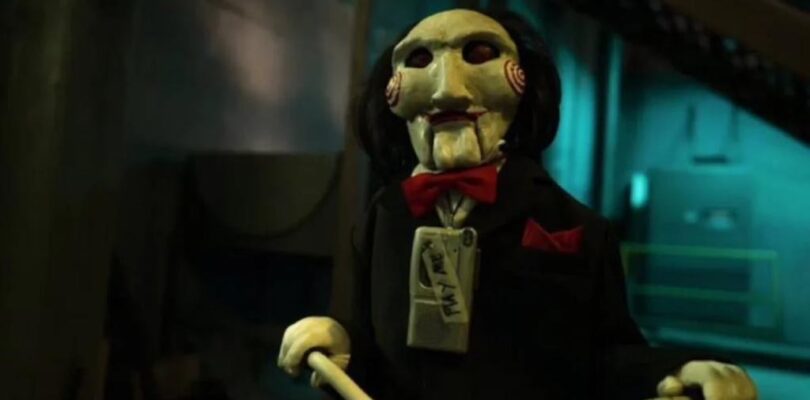Blumhouse has acquired Twisted Pictures’ half of the iconic Saw franchise IP, a development first reported by Deadline. Per the new deal, Lionsgate will retain its existing half of the ownership. This strategic move by Jason Blum’s company is monumental news for horror enthusiasts, signaling a potential creative resurgence for the long-running series known for its intricate traps and moral quandaries. Blumhouse has a formidable track record of nurturing and successfully expanding horror properties, from launching original multi-film sagas to breathing new life into established classics. The studio’s involvement promises a fresh perspective and a steady hand for a franchise that, despite its enduring popularity and a recent critical upswing, has faced challenges in maintaining consistent momentum and direction in recent years.
Videos by ComicBook.com
Blumhouse’s acquisition of the Saw IP is a positive development primarily due to the studio’s proven expertise in the horror genre. Under the leadership of Jason Blum, the company has cultivated a reputation for delivering high-concept, filmmaker-driven horror that resonates with both critics and audiences. Their model, often characterized by modest budgets and a focus on inventive storytelling, has led to some of the most successful horror franchises of the 21st century. For instance, franchises like The Purge have not only spawned multiple sequels but also a television series, a path soon to be followed by the multi-billion dollar hit franchise The Conjuring. This capacity for sustained franchise management is precisely what the Saw IP could benefit from.
[RELATED: Blumhouse Is Behind Three Oscar-Winning Films (And Only One Is Horror)]
Moreover, Blumhouse has demonstrated a keen understanding of how to reinvigorate existing intellectual property. Their approach to David Gordon Green’s Halloween trilogy, starting with the 2018 film, successfully brought Michael Myers back to the forefront of modern horror, respecting the legacy of the original while forging a new path. They accomplished a similar feat with Leigh Whannell’s The Invisible Man, offering a contemporary and terrifying take on a classic Universal Monster. This experience in balancing fan expectations with fresh creative vision is crucial for a franchise like Saw, which boasts a dedicated fan base and a rich lore.
The Recent Hurdles of the Saw Franchise
The Saw franchise, masterminded by James Wan and Leigh Whannell, first exploded onto the horror scene in 2004, instantly captivating audiences with its ingenious premise, shocking twists, and the chilling philosophy of its central antagonist, John Kramer (Tobin Bell), also known as Jigsaw. The initial film’s success spawned a yearly Halloween tradition, with sequels rapidly following, each attempting to unravel more of Jigsaw’s intricate plans and introduce new elaborate traps. For seven consecutive years, Saw dominated the October box office, becoming a cultural phenomenon and a defining franchise of the “torture porn” subgenre, though its creators often emphasized the psychological and moral elements over pure gore. Twisted Pictures, alongside Lionsgate, steered the series through its original run, concluding, or so it seemed, with Saw 3D: The Final Chapter in 2010.
However, after a seven-year hiatus, the attempts to revive the franchise under Twisted Pictures’ continued guidance yielded mixed results. The 2017 film Jigsaw aimed to soft-reboot the series by introducing a new game seemingly orchestrated by a copycat. While commercially decent, it received a lukewarm critical response and didn’t quite ignite the fervent enthusiasm of its predecessors. A more ambitious departure came in 2021 with Spiral: From the Book of Saw, starring Chris Rock and Samuel L. Jackson, which attempted to expand the universe by focusing on a different killer inspired by Jigsaw, operating within a police procedural framework. Despite its interesting premise and star power, Spiral underperformed at the box office and struggled to connect with a segment of the fanbase who missed the direct Jigsaw storyline.
The most recent installment, Saw X (2023), marked a significant return to form both critically and commercially. By setting the film between Saw and Saw II and bringing Tobin Bell back to the forefront as an almost sympathetic protagonist, the movie was praised for refocusing on what made the early films compelling. Yet, even with Saw X‘s positive reception, Twisted Pictures failed to kick off development of a new Saw movie. Blumhouse’s involvement now offers the promise of a more consistent future, potentially leveraging their expertise to build upon the renewed interest generated by Saw X while also exploring innovative directions.
What are you hoping to see from a Blumhouse-produced Saw movie? Let us know in the comments!





